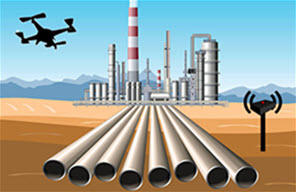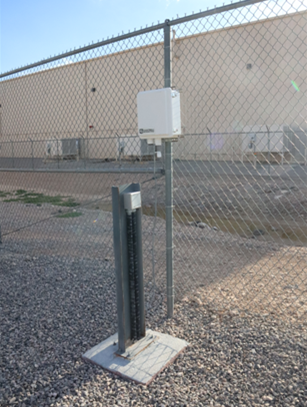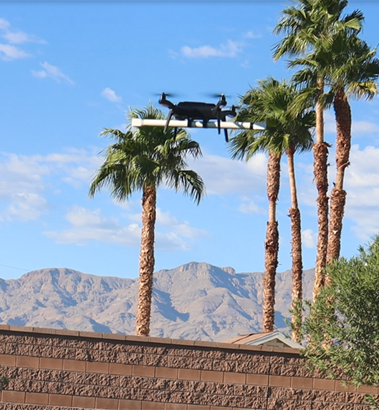
SDRD Highlight: Fighting climate change with UASs

As part of the effort to fight climate change, the current federal administration has recently issued the U.S. Methane Emissions Reduction Action Plan (Executive Order 13990), which will require landfills, mines, and oil and gas well sites and their transport pipelines to reduce methane gas emissions by up to 75% by the year 2030. In order to meet this requirement, sources of methane leakage will need to be identified, measured, and repaired. Current models to accomplish this are done remotely with “top down” detection from aircraft and satellites, which can be costly and limiting for monitoring, reporting, and verification (MRV).

In an effort to reduce cost and increase ease of measurement and identification, Principal Investigator Hilary Tarvin and her indispensable team–Electrical Engineer Eric Schmidthuber, Technologist Sean Sheehan, and Mentor Michael Howard–conducted a feasibility study using the emerging technology of micro-electrical mechanical systems, or MEMs, and pairing them with small unmanned aircraft systems (sUASs). The study developed two prototype ground-based sensors and designed a UAS-deployable sensor package that incorporated commercial-off-the-shelf (COTS) methane sensors from Nevada Nano. These sensors were advantageous to this project because of their light weight (8 grams), low energy consumption (29 mW), and detection range (initial sensor range was 300–1,500 ppm with 1 ppm resolution and newly released sensor range increased to 50–1,000,000 ppm with 1 ppm resolution). These COTS sensors were also resistant to poisoning, featured built-in environmental compensation, and did not require calibration.
The two ground-based sensors were installed and deployed along the fence line at the Remote Sensing Laboratory-Nellis and at the Methane Emissions Technology Evaluation Center at Colorado State University. Data were collected from both sensors that showed positive methane gas detections from leaks in the local environment, and thus proved the feasibility of using the sensors for such a purpose, but more work is required to develop data processing algorithms that account for local meteorological conditions in order to provide higher fidelity geolocation of the sources of methane releases.

The sensor deployed with the UAS also proved to be feasible in terms of structure and stability. The team was able to create a sensor package featuring the aforementioned sensors inside a 3/4″ PVC tube with a 3D-printed mounting head for the sensor unit. Using a small quadcopter provided by another SDRD team, the package was mounted onto the UAS and test lifts were achieved and successful. The package did not overburden the UAS with weight and there were no issues with maintaining stability.

The overall conclusions of this study suggest that MEMs are feasible in the MRV of methane gases. Methane is a serious concern and this technology could prove instrumental in the fight against climate change.